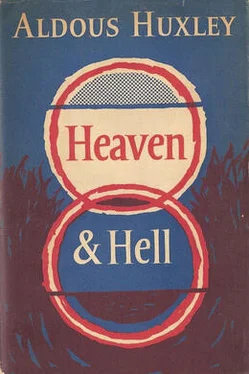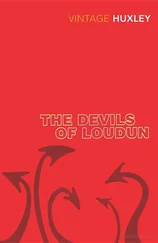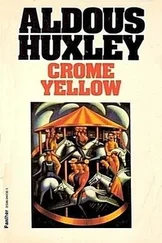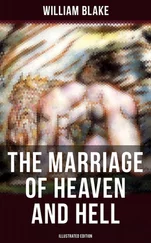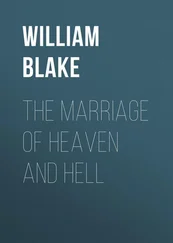Vision–like effects and vision–inducing devices have played a greater part in popular entertainment than in the fine arts. Fireworks, pageantry, theatrical spectacle—these are essentially visionary arts. Unfortunately they are also ephemeral arts, whose earlier masterpieces are known to us only by report. Nothing remains of all the Roman triumphs, the mediaeval tournaments, the Jacobean masques, the long succession of state entries and coronations, of royal marriages and solemn decapitations, of canonizations and the funerals of Popes. The best that can be hoped for such magnificences is that they may 'live in Settle's numbers one day more.'
An interesting feature of these popular visionary arts is their close dependence upon contemporary technology. Fireworks, for example, were once no more than bonfires (and to this day, I may add, a good bonfire on a dark night remains one of the most magical and transporting of spectacles. Looking at it, one can understand the mentality of the Mexican peasant, who sets out to burn an acre of woodland in order to plant his maize, but is delighted when, by a happy accident, a square mile or two goes up in bright, apocalyptic flame). True pyrotechny began (in Europe at least, if not in China) with the use of combustibles in sieges and naval battles. From war it passed, in due course, to entertainment. Imperial Rome had its firework displays, some of which, even in its decline, were elaborate in the extreme. Here is Claudian's description of the show put on by Manlius Theodorus in A.D. 399.
Mobile ponderibus descendat pegma reductis inque chori speciem spargentes ardua flammas scaena rotet varios, et fingat Mulciber orbis per tabulas impune vagos pictaeque citato ludant igne trabes, et non permissa morari fida per innocuas errent incendia turres.
'Let the counterweights be removed,' Mr Platnauer translates with a straightforwardness of language that does less than justice to the syntactical extravagances of the original, 'and let the mobile crane descend, lowering on to the lofty stage men who, wheeling chorus–wise, scatter flames. Let Vulcan forge balls of fire to roll innocuously across the boards. Let the flames appear to play about the sham beams of the scenery and a tame conflagration, never allowed to rest, wander among the untouched towers.'
After the fall of Rome, pyrotechny became, once more, exclusively a military art. Its greatest triumph was the invention by Callinicus, about A.D. 650, of the famous Greek Fire—the secret weapon which enabled a dwindling Byzantine Empire to hold out for so long against its enemies.
During the Renaissance fireworks re–entered the world of popular entertainment. With every advance in the science of chemistry, they became more and more brilliant. By the middle of the nineteenth century pyrotechny had reached a peak of technical perfection and was capable of transporting vast multitudes of spectators towards the visionary antipodes of minds which, consciously, were respectable Methodist, Puseyites, Utilitarians, disciples of Mill or Marx, of Newman, or Bradlaugh, or Samuel Smiles. In the Piazza del Popolo, at Ranelagh and the Crystal Palace, on every Fourth and Fourteenth of July, the popular subconscious was reminded by the crimson glare of strontium, by copper blue and barium green and sodium yellow, of that Other World, down under, in the psychological equivalent of Australia.
Pageantry is a visionary art which has been used, from time immemorial, as a political instrument. The gorgeous fancy dress worn by Kings, Popes and their respective retainers, military and ecclesiastical, has a very practical purpose—to impress the lower classes with a lively sense of their masters' superhuman greatness. By means of fine clothes and solemn ceremonies, de facto domination is transformed into a rule not merely de jure , but positively, de jure divino . The crowns and tiaras, the assorted jewellery, the satins, silks and velvets, the gaudy uniforms and vestments, the crosses and medals, the sword hilts and the croziers, the plumes in the cocked hats and their clerical equivalents, those huge feather fans which make every papal function look like a tableau from Aida —all these are vision–inducing properties, designed to make all too human gentlemen and ladies look like heroes, demigoddesses and seraphs, and giving, in the process, a great deal of innocent pleasure to all concerned, actors and spectators alike.
In the course of the last two hundred years the technology of artificial lighting has made enormous progress, and this progress has contributed very greatly to the effectiveness of pageantry and the closely related art of theatrical spectacle. The first notable advance was made in the eighteenth century, with the introduction of moulded spermaceti candles in place of the older tallow dip and poured wax taper. Next came the invention of Argand's tubular wick, with an air supply on the inner as well as the outer surface of the flame. Glass chimneys speedily followed, and it became possible, for the first time in history, to burn oil with a bright and completely smokeless light. Coal gas was first employed as an illuminant in the early years of the nineteenth century, and in 1825 Thomas Drummond found a practical way of heating lime to incandescence by means of an oxygen–hydrogen or oxygen–coal gas flame. Meanwhile parabolic reflectors for concentrating light into a narrow beam had come into use. (The first English lighthouse equipped with such a reflector was built in 1790.)
The influence on pageantry and theatrical spectacle of these inventions was profound. In earlier times civic and religious ceremonies could only take place during the day (and days were as often cloudy as fine), or by the light, after sunset, of smoky lamps and torches or the feeble twinkling of candles. Argand and Drummond, gas, limelight and, forty years later, electricity made it possible to evoke, from the boundless chaos of night, rich island universes, in which the glitter of metal and gems, the sumptuous glow of velvets and brocades were intensified to the highest pitch of what may be called intrinsic significance. A recent example of ancient pageantry, raised by twentieth–century lighting to a higher magical power, was the coronation of Queen Elizabeth II. In the motion picture of the event, a ritual of transporting splendour was saved from the oblivion which, up till now, has always been the fate of such solemnities, and preserved it, blazing praeternaturally under the floodlights, for the delight of a vast contemporary and future audience.
Two distinct and separate arts are practised in the theatre—the human art of the drama, and the visionary, other–world art of spectacle. Elements of the two arts may be combined in a single evening's entertainment—the drama being interrupted (as so often happens in elaborate productions of Shakespeare) to permit the audience to enjoy a tableau vivant , in which the actors either remain still or, if they move, move only in a non–dramatic way, ceremonially, processionally or in a formal dance. Our concern here is not with drama; it is with theatrical spectacle, which is simply pageantry without its political or religious overtones.
In the minor visionary arts of the costumier and the designer of stage jewellery our ancestors were consummate masters. Nor, for all their dependence on unassisted muscle power, were they far behind us in the building and working of stage machinery, the contrivance of 'special effects.' In the masques of Elizabethan and early Stuart times, divine descents and irruptions of demons from the cellarage were a commonplace; so were apocalypses, so were the most amazing metamorphoses. Enormous sums of money were lavished on these spectacles. The Inns of Court, for example, put on a show for Charles I which cost more than twenty thousand pounds—at a date when the purchasing power of the pound was six or seven times what it is to–day.
Читать дальше
